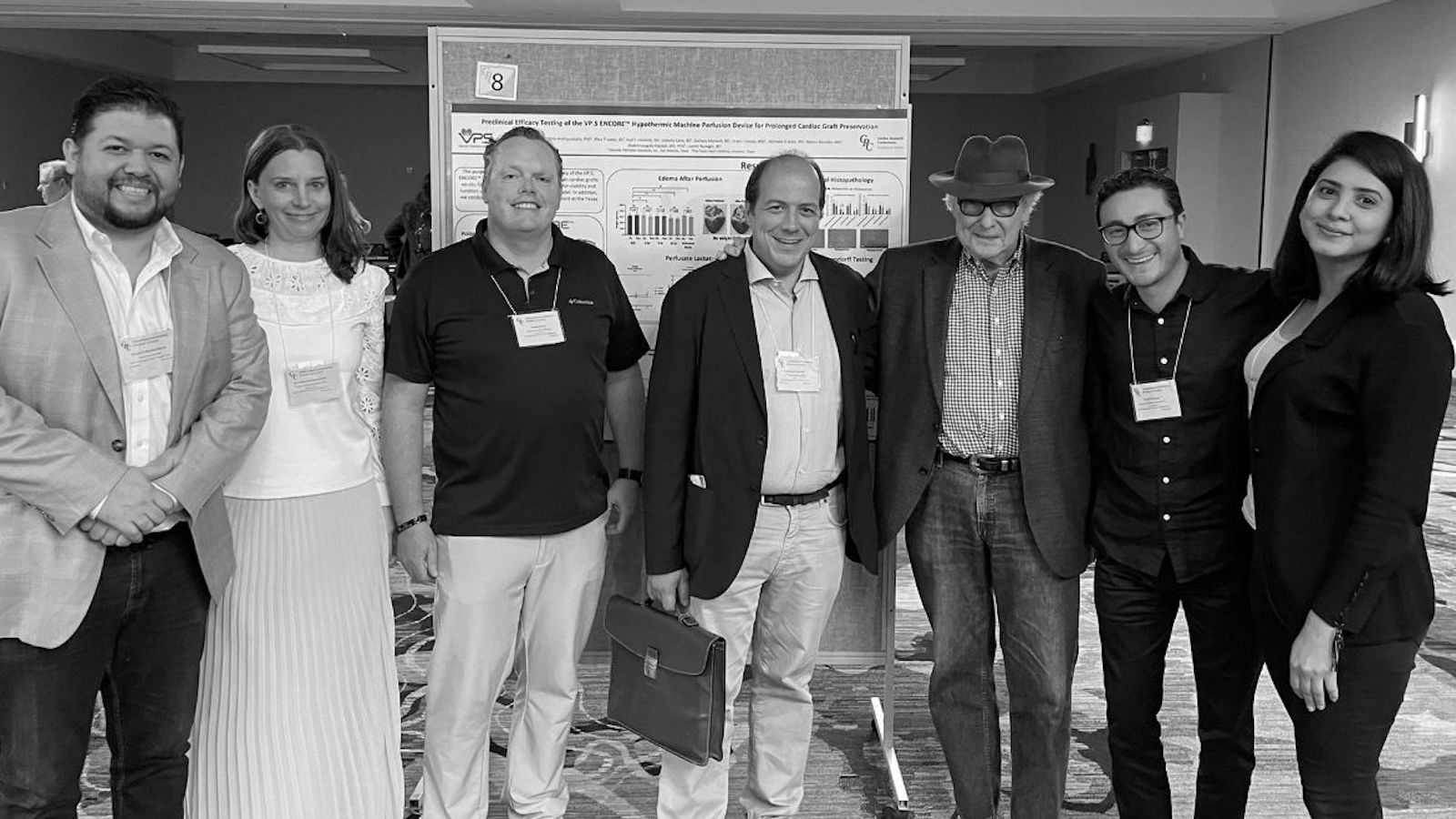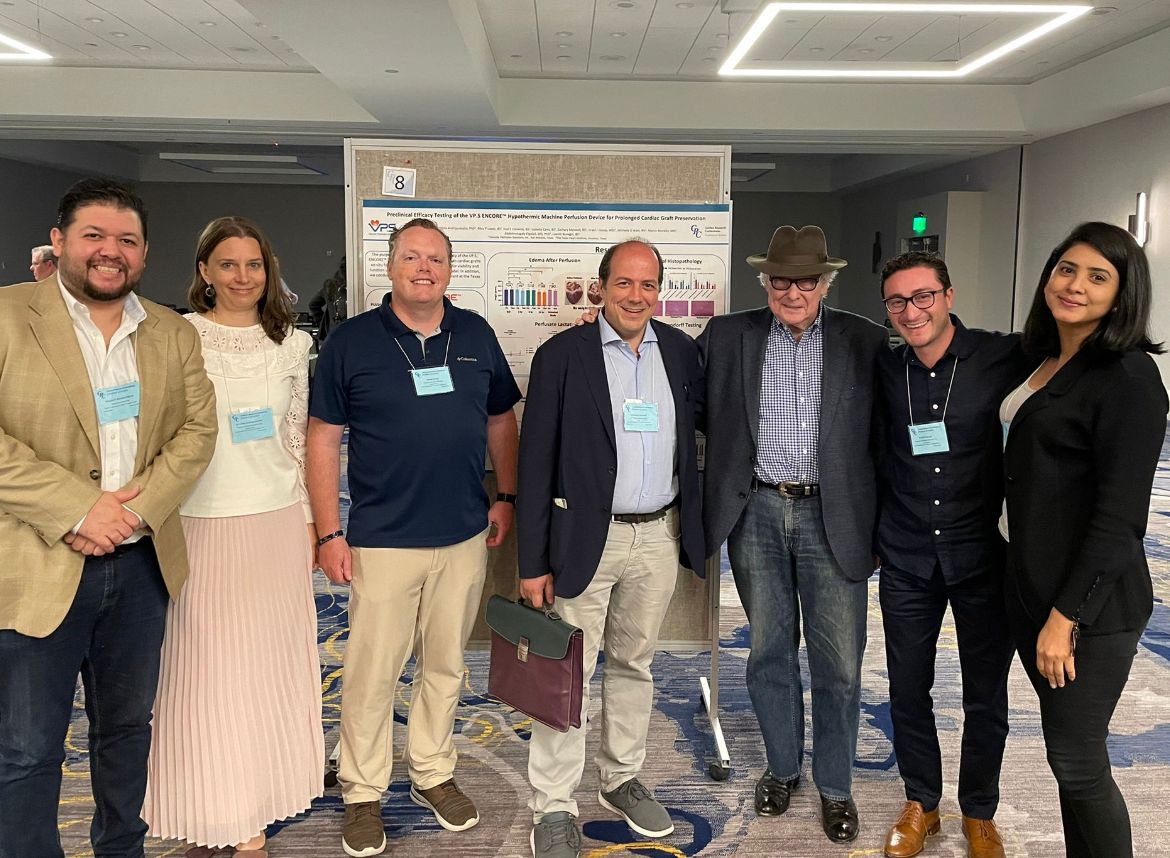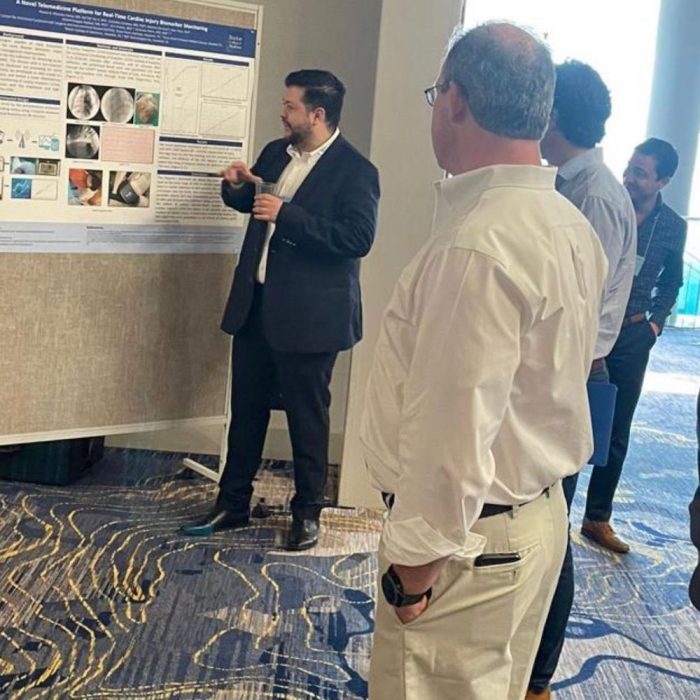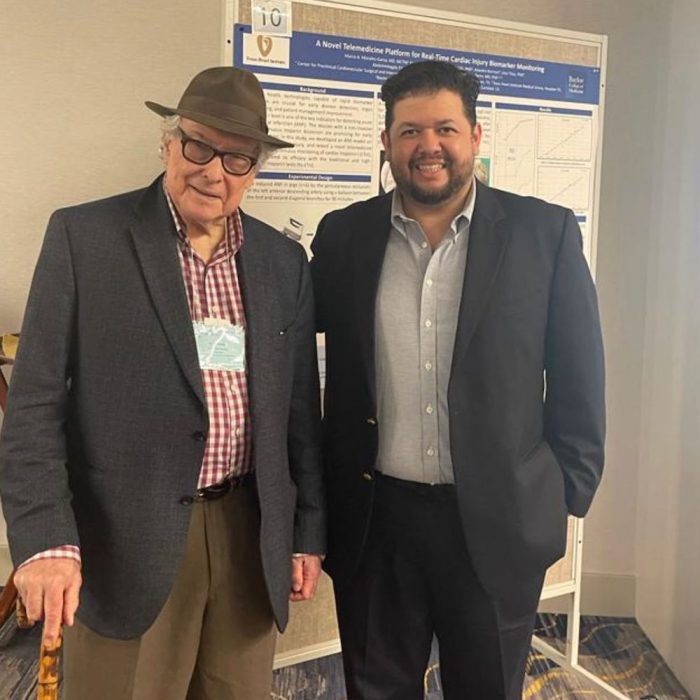Scientists From The Texas Heart Institute Present Findings at the Gordon Research Conferences

This summer, researchers from The Texas Heart Institute (THI) Cardiomyocyte Renewal Laboratory/McGill Gene Editing Laboratory, Regenerative Medicine Research Department, and Center for Preclinical Surgical and Interventional Research presented their work at Gordon Research Conferences held in New Hampshire and California.
The Gordon Research Conferences began with small summer meetings held at Johns Hopkins University in the 1930s and today they attract nearly 40,000 participants annually to conferences held around the world. The conferences uphold the principles of free and open discussion of research at the frontiers of science, with an emphasis on building global communities in the biological, chemical, physical, and engineering sciences, and their interfaces.
The Texas Heart Institute was well represented at this summer’s Gordon Research Conferences.
Rich Gang Li, PhD, Xiao Li, PhD, Yuka Morikawa, PhD, Jong Kim, PhD, Shijie Liu, PhD, and James Martin, MD, PhD, from the THI Cardiomyocyte Renewal Laboratory and McGill Gene Editing Laboratory and their collaborators from Baylor College of Medicine presented “Spatial Transcriptomics Reveal a Colocalized Cellular Triad Required for Heart Renewal” at the Cardiac Regulatory Mechanisms Gordon Research Seminar held at Colby-Sawyer College in New London, New Hampshire from June 25-26, 2022. Dr. Rich Li described their recent findings about the co-localization of heart cell types, specifically cardiomyocytes, fibroblasts, and macrophages, within the heart tissue microenvironment during regeneration and repair. The team used single-cell RNA sequencing (scRNA-seq), spatial transcriptomics, and ligand-receptor analyses to study the interplay amongst the three cell types, including the potential involvement of innate immunity pathways and the possible direct and indirect roles of reparative macrophages. Further study of these cellular interactions may lead to the development of new therapies for cardiac injury.
Lourdes Chacon-Alberty, MD, MCTM, Ernesto Curty da Costa, MD, PhD, Camila Hochman-Mendez, MSc, PhD, from the THI Regenerative Medicine Research Department; Gabriel Loor, MD, from the THI Professional Staff and Baylor College of Medicine; and their collaborators at the University of Houston presented “Exosomal mRNA and microRNA Interaction in Patients with Primary Graft Dysfunction” at the Graft Preservation in Heart Transplantation Gordon Research Conference held in Ventura, California from July 17-22, 2022. Primary graft dysfunction is the most significant cause of early morbidity and mortality after lung transplantation, with still relatively little known about the injury’s pathogenesis and prevention.
Dr. Chacon presented the team’s analyses comparing the microRNA and mRNA exosomal cargoes from lung transplant patients with and without primary graft dysfunction. Compared to samples collected before transplant, the investigators identified significant changes in mRNA expression patterns in plasma-derived exosomes in patients both with and without primary graft dysfunction at 72 hours after organ transplantation; notably, the change in gene expression in the patients without the syndrome was 74% lower than in those with it. Additionally, they identified microRNA-mRNA interaction networks and signaling pathways in the exosomes, including cytokine signaling in the immune system, that provide new insights into the pathophysiology of primary graft dysfunction and should stimulate the development of new therapeutic targets.
Also at the conference in Ventura, Marco Morales-Garza, MD, MCTM, Ke Li, MD, Cristiano Cardoso, MD, PhD, Abdelmotagaly Elgalad, MD, PhD, O. H. Frazier, MD, and Emerson C. Perin, MD, PhD, from the THI Center for Preclinical Surgical and Interventional Research and their collaborators from RCE Technologies, Inc. presented “A Novel Telemedicine Platform for Real-Time Cardiac Injury Biomarker Monitoring.” Using a preclinical model of heart attack (myocardial infarction), the team tested the detection capabilities of a new monitoring device that continuously and noninvasively measures the wearer’s cardiac troponin I (cTnI) level, a biomarker of cardiac injury.
The biosensor was able to detect small changes in cardiac troponin I within the first few minutes of the heart attack, whereas traditional (i-STAT) and high-sensitivity (ELISA) troponin tests did not detect a rise in the biomarker level until almost 90 minutes had passed. This suggests that the wearable technology could make acute myocardial infarction detectable much earlier in persons at risk, enabling rapid treatment. The biosensor could also be used to monitor cardiac troponin I levels in heart transplant recipients, in whom it is a marker of primary graft dysfunction.

In a separate research effort shared at the conference in Ventura, Drs. Morales-Garza and Elgalad and their collaborators from Vascular Perfusion Solutions, Inc. presented “Efficacy Testing of the VP.S ENCORE™ Hypothermic Machine Perfusion Device for Prolonged Cardiac Graft Preservation.” Preclinical transplantation models were used to test the efficacy of the VP.S. ENCORE™ device in preserving hearts outside the body. The device chills the tissue to 4-8°C and provides pulsatile perfusion that simulates the blood flow generated by the heart.
The study compared several physical and functional characteristics of hearts kept in standard cold storage for 4 hours, in the Encore device for 4, 8, or 24 hours, or in “extended mode” (2 hours in the Encore plus 4 hours of standard cold storage). On average, hearts perfused by the Encore device for 4 hours or in extended mode weighed 6% less than hearts kept in standard cold storage, indicating lower levels of edema. The hearts perfused for 4 hours also showed less tissue degradation and had higher left ventricular function than the cold-storage hearts.
As part of the same study, hearts were kept perfused or in cold storage for 4 hours and transplanted into preclinical models afterward. The experimental animal subjects that received the perfused hearts required less time on cardiopulmonary bypass and, in the 6 hours after implantation, consistently had a lower vasopressor dependency index, thus reducing the requirement for inotropic drugs to maintain their heart function.
Drs. Frazier and Morales-Garza shed light on the significance of this presentation and offered a glimpse into the future of the graft preservation project.
Question: What is the next phase of this research?
Dr. Morales-Garza: The next phase will be to perform the GLP [Good Laboratory Practice] studies at our THI lab, so we can send that data to the FDA [U.S. Food and Drug Administration] as part of the regulatory approval process.
Dr. Frazier: We aim to provide nutritional as well as circulatory support.
Dr. Morales-Garza: Nutritional solutions are the next step needed for the preservation of the heart during organ transport. Ideally, the specially designed pumps will leverage pulsatile flows to keep the organ well-perfused with oxygen and nutrients while it is transported. Keeping the organ at 6-8°C (about 42-46°F) slows the metabolism of the organ and diminishes the nutritional requirements; low temperatures also help with the immunology of organ rejection. Ultimately, this strategy enhances the long-term outcomes of organ function and the viability, quality, and quantity of transplanted organs.
Question: How could this finding impact patient care? In lay terms.
Dr. Frazier: This approach may allow for better placement as well as function of these transplanted hearts. The hope is that through extended viability of the donor heart, a more precise immunologic matching may be achieved which will result in improved long-term survival of transplants, as well as better donor utilization. The donor utilization is now only about 35% of the hearts offered for transplant.
Dr. Morales-Garza: Put another way, that 35% organ utilization rate indicates that up to 65% of the hearts are not viable due to problems during transport, including lack of oxygen, nutrients, or circulation. The VP.S ENCORE™ system changes that by supplying oxygen and nutrients at low temperatures and reducing inflammation and rejection in the recipients. This medical device will help to increase organ viability and therefore the organ pool available to hospitals around the United States. This will ultimately improve the long-term survival of organs for patients in need of a transplant.






